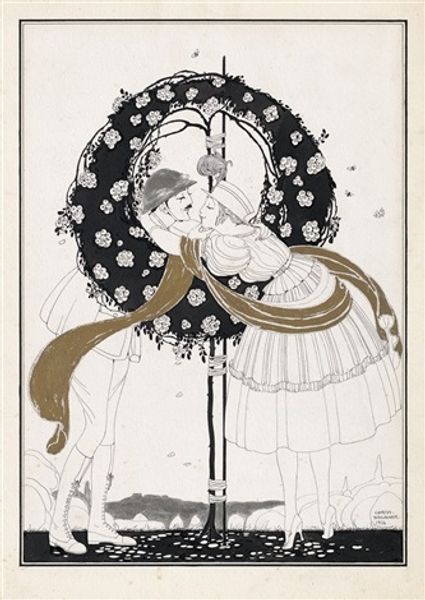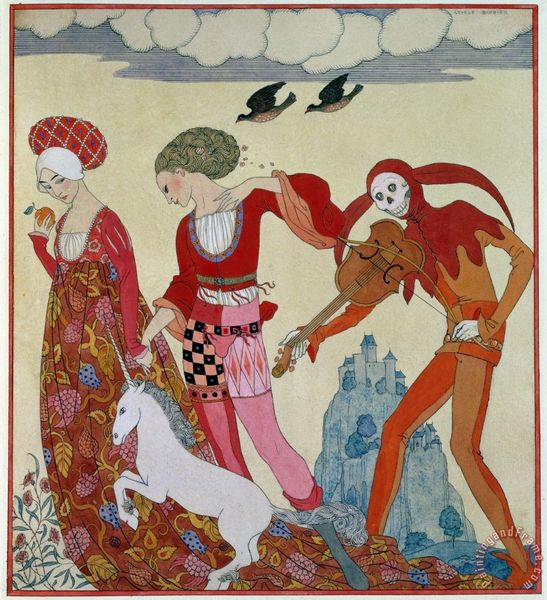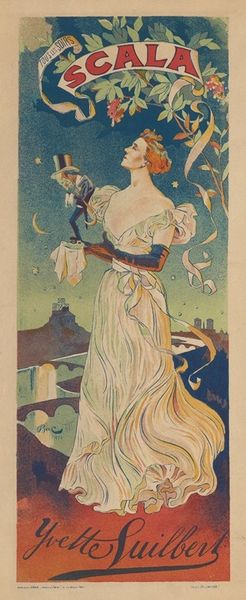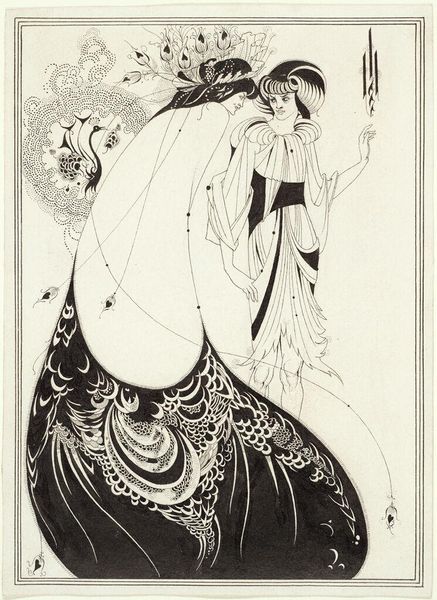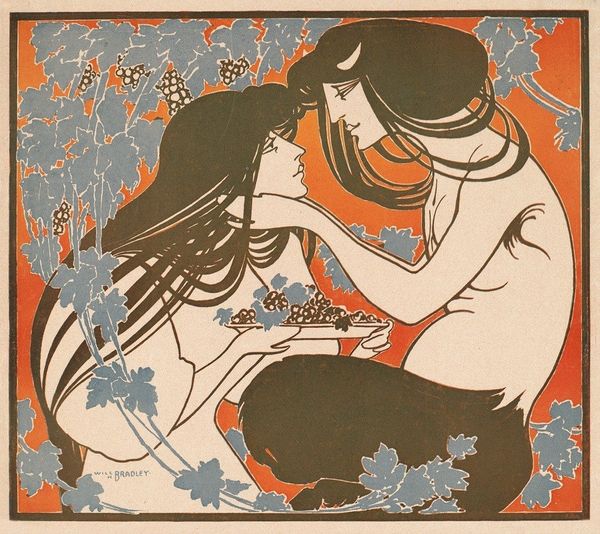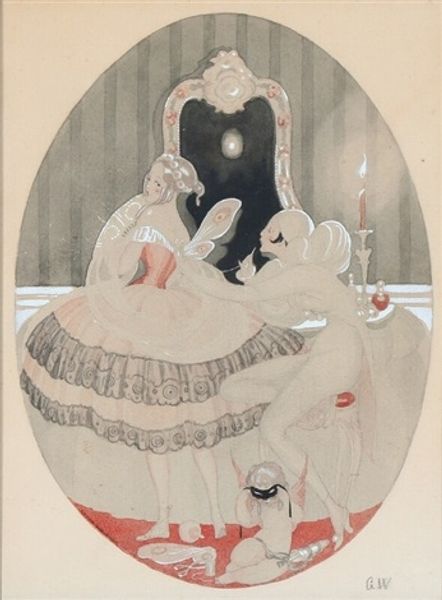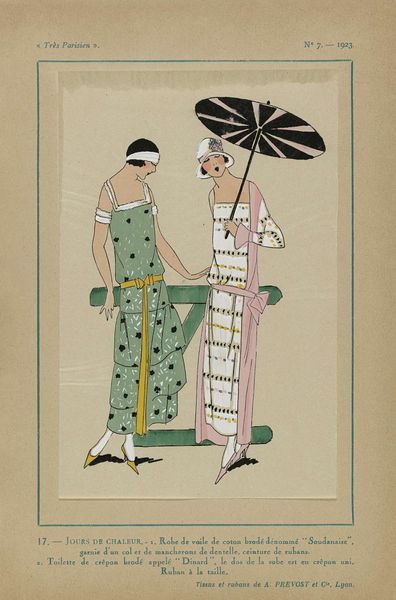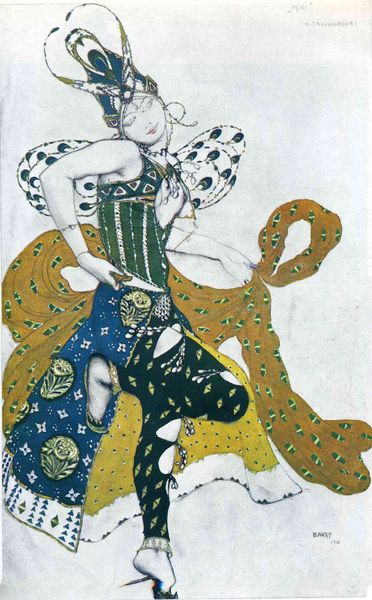
drawing, print
#
portrait
#
drawing
#
art-nouveau
# print
#
pop art
#
figuration
#
mural art
#
naive art
#
symbolism
#
decorative-art
Copyright: Public Domain: Artvee
Curator: This is Ralph Barton’s "The Lie of the Last Minstrel," a print created around 1917. Editor: Immediately, it strikes me as melancholic masquerade! All those stiff angular figures—so stylized—almost like a dream dipped in absinthe. Curator: Barton was a fascinating character. Known for his caricatures and illustrations during the Jazz Age, he captured the social scene, celebrity culture, and underlying anxieties of that era. This work really shows you the confluence of art nouveau, symbolism, and decorative arts that define his output. It's a print, so mass production and dissemination of images was key to his work. Editor: There's an odd disconnect...the vibrant color palette, especially that juicy orange in contrast to the purple...suggests frivolity. Yet, the figures’ expressions, or lack thereof, hint at a deeper, more complex narrative—the ‘lie’ maybe? That flattening is quite haunting. Is that naive art element intentional, would you say, to create this kind of surreal stage? Curator: Absolutely, it’s important to look at how the image was circulated, consumed, and by whom. Consider the social circles these images might have traversed and the statement they made. Mass-produced art makes luxury available across the socio-economic spectrum. It opens up aesthetic experiences to people previously excluded. Editor: Yes, democratizing art, or maybe it’s that democratizing tragedy? It does feel vaguely unsettling, almost mocking some sort of elite sensibility, or maybe reflecting a cynical disillusionment of the time...like everyone's in costume even when they're not at a party. And technically, the flatness you mentioned earlier combined with decorative elements is what makes that reading even more prominent. It's a captivating dance of light and shadow, isn't it? Even though the drawing shies away from defining shadow in a realistic sense. Curator: Barton used printmaking processes not just for visual reproduction but also to critique and reflect the emerging industrial, social conditions of the modern world. The flatness speaks to its context. Editor: It does. Thinking about how this image made it into the world makes it linger, and maybe makes that lie just a bit harder to swallow, you know? Curator: Agreed, it's more than just aesthetic pleasure, it's about the machinery and conditions that allow that pleasure to be broadly accessible.
Comments
No comments
Be the first to comment and join the conversation on the ultimate creative platform.
